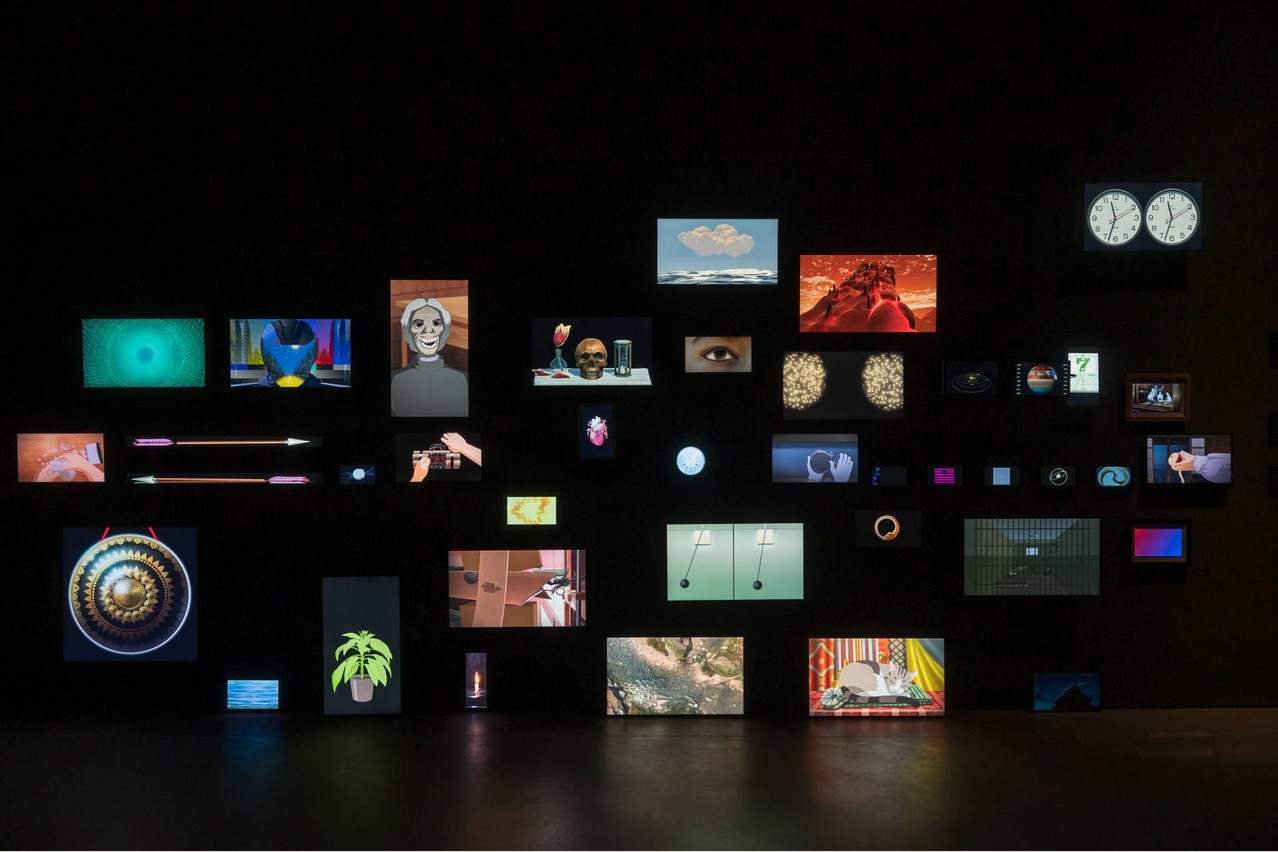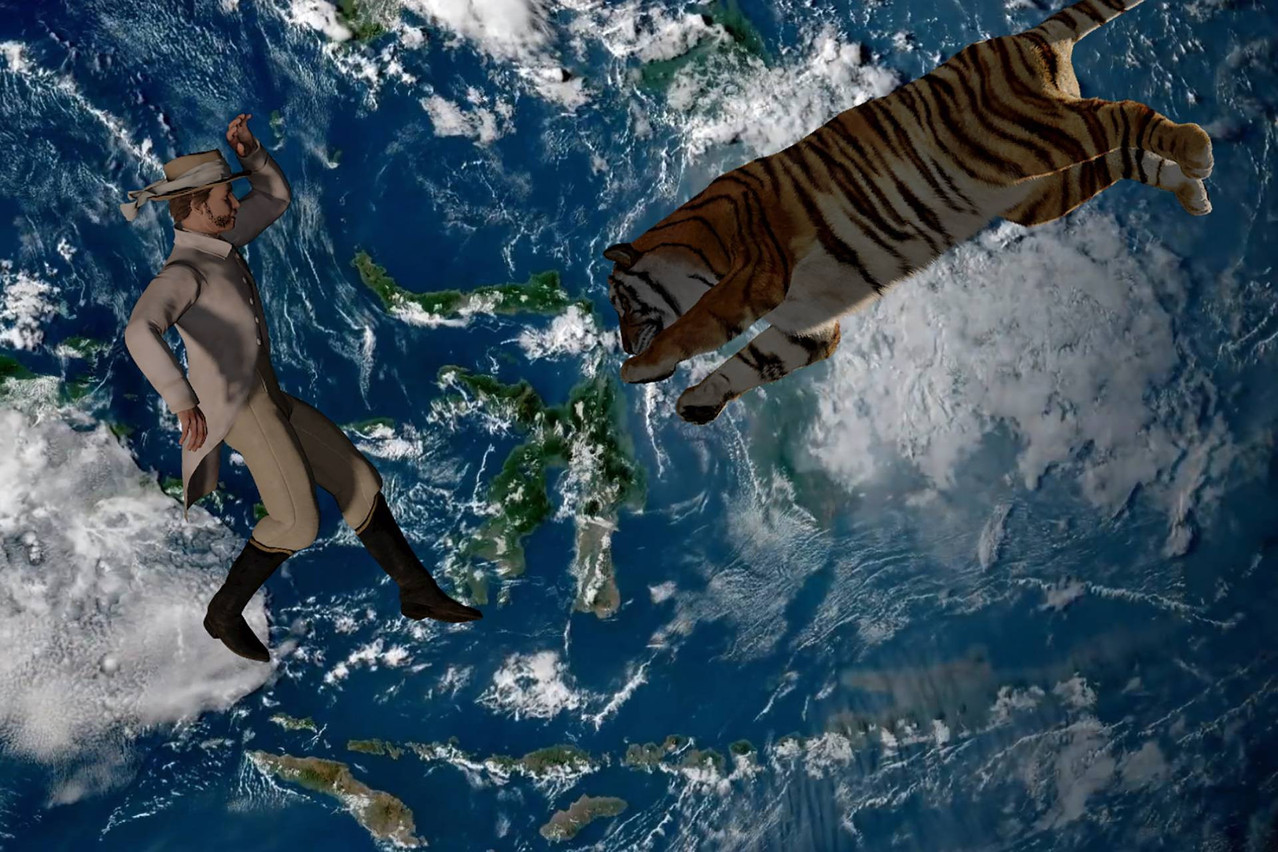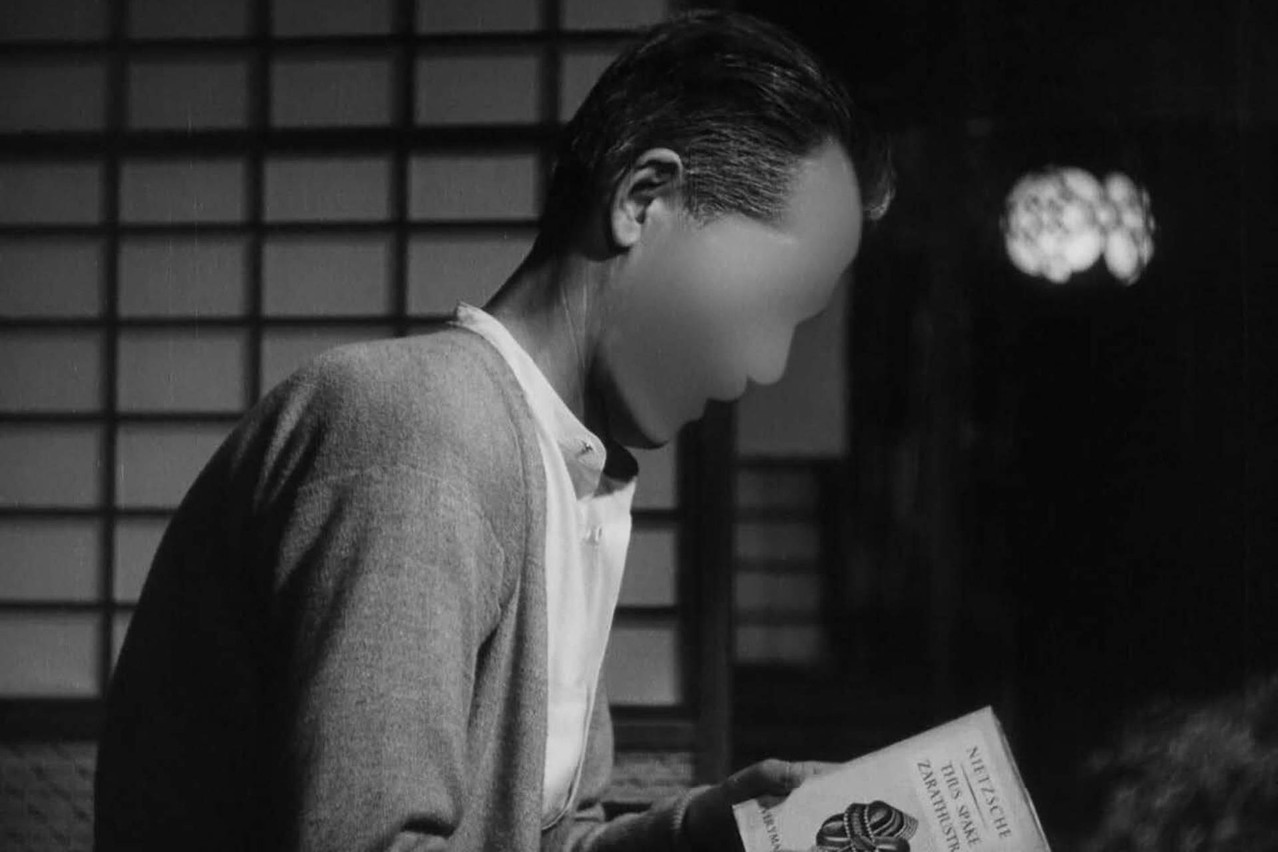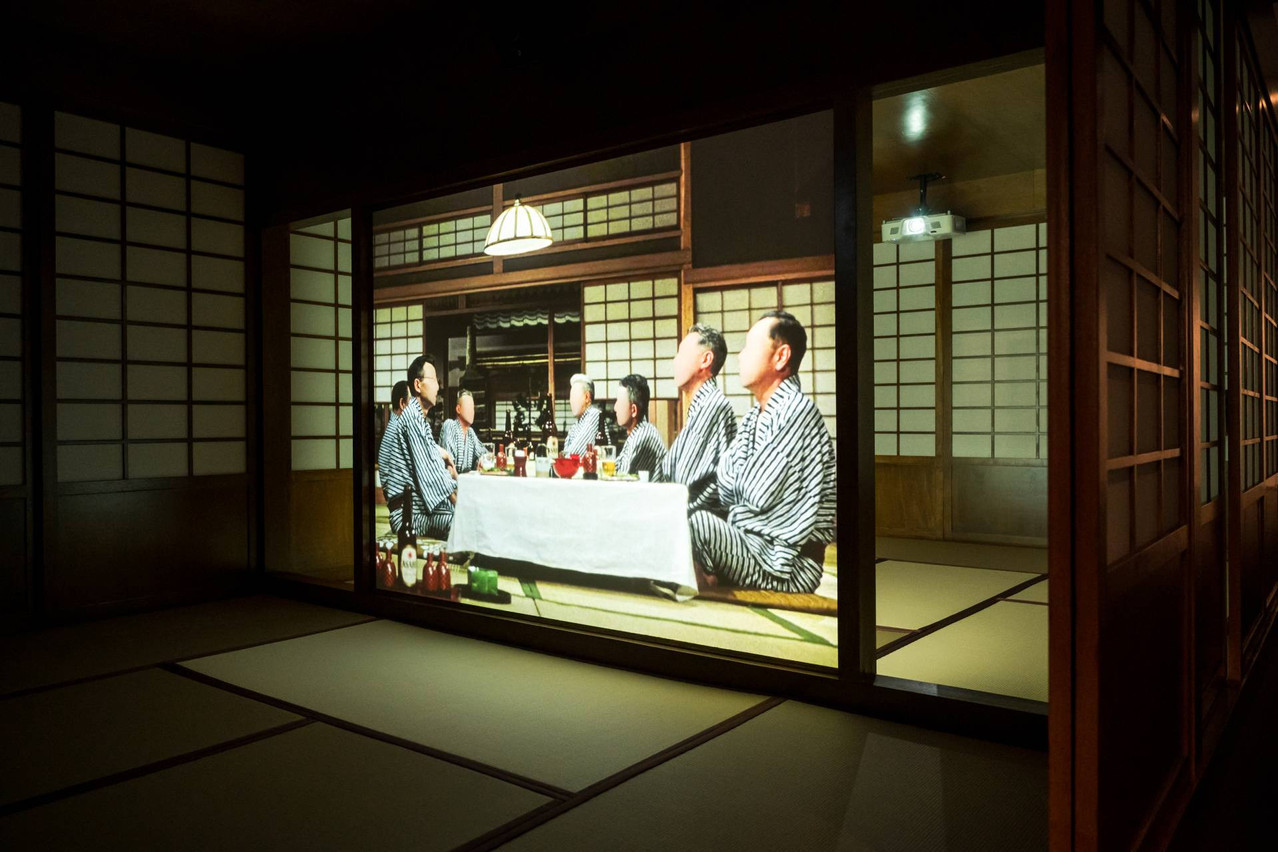Ho Tzu Nyen is a rare artist on the European scene. The exhibition at Mudam is his first solo show on our continent, following a tour of Asia and the United States. For this project, he has chosen to present five video installations, conceived between 2017 and the present day. They reveal two verticals that run through his work and are highlighted in the title of the exhibition: time and the tiger.
Time, that indefinable thing
For the artist, time is a malleable material that is difficult to define. “We often use the image of a river and flowing water to represent time, but that’s not right,” says Ho. “Because in this case, what do the riverbanks or the riverbed represent? Time is more made up of meanders, loops, returns... Finally, working with moving images is a way for me to give time a form.”
In the installation T for Time: Timespieces (2023-in progress), visitors discover a wall of 43 LED screens on which short videos are projected in a loop. All are linked to some form of representation of time, different ways of experiencing it or even of conceiving it: symbolic representations (a lit candle, a flowing river, a still life), instruments for measuring time (an aquatic clock, pendulums), cultural references to time (such as Perfect Lovers by Felix Gonzaléz Torres) or even relationships to time linked to the animal world (ephemera that only live for a few hours).
At the back of the gallery, the projection is a set of 42 sequences that are programmed using an algorithm that generates a new montage each time the work is activated, provoking new associations of ideas, narratives and periods.

Installation view of T for Time: Timepieces (2023-in progress) Photo: Singapore Art Museum
The multiple stories of the tiger
Alongside time, the tiger is a central figure in Ho’s work. “The tiger is a motif I’ve been working with for over 10 years. It’s a very ancient animal that carries with it a cosmology and is linked to spirits. By being interested in the tiger, I’m interested in the history and evolution of the region. Because its presence or disappearance is linked to the evolution of our society,” explains the artist.
This figure of the tiger is developed in the second gallery, and is introduced by a 19th-century lithograph depicting George D. Coleman, the Irish architect and town planner responsible for the construction of Singapore during colonisation. He finds himself in the jungle just as a tiger leaps out in front of him and pounces on a theodolite, an extremely expensive topographical measuring instrument.
Later, a projection on two screens facing each other brings the tiger and Coleman together in a sung and hypnotic duet, bringing rationality and control into direct confrontation with the wild and natural.

One or Several Tigers (2017) Photo: Singapore Art Museum
“Southeast Asia is a region that was given this name by the Allies after the Second World War. Geologically, it is a single landmass that subsequently broke up into several pieces. Today, it is a very heterogeneous territory, with several languages, several religions and several political systems. There is no unity. It’s an object that remains mysterious to me, with a very artificial unity. But over time, it has taken on a certain reality. It has become a paradoxical object that exists and doesn't exist at the same time. The figure of the tiger helps to tell this story. It is a wild animal to which many beliefs and myths are attached, and whose disappearance goes hand in hand with colonialism,” says Ho.
Storytelling
Finally, at the crossroads of the two galleries, Hotel Aporia (2019) deals with the influence of Japanese imperialism in Asia at the time of the Second World War. This installation, originally conceived for a traditional Japanese hotel, combines several stories featuring characters from that era. “These characters no longer have faces; they are like ghosts inhabiting the different rooms of this old hotel,” explains Ho, who invites visitors to sit on tatami mats to watch the videos. “This installation is also linked to a real story about this old hostel, which housed a group of Kamikaze pilots before a fatal raid, hence the wind noise I added.”

Extract from a video of Hotel Aporia. Photo: Courtesy of Singapore Art Museum
But to this is also added a reflection linked to the philosophers of the Kyoto group, to the films of Ozu, to the animated propaganda films of Ryūichi Yokoyama, to snippets of exchanges that Nyen had with Japanese collaborators at the time of the production of this work, including translators... Through this installation, we better understand how Ho constructs his art: through a succession of layers of narratives, references, sources, temporalities. In this way, he creates polyphonic voices that underline the multiplicity and complexity of discourse and the multiple perspectives it brings to the subject.
This article was originally published in .
